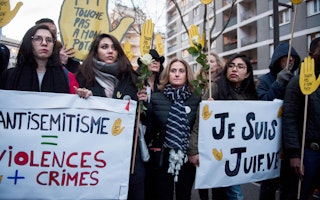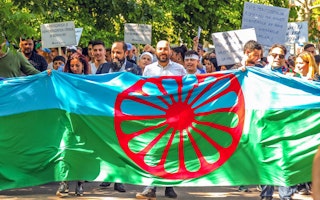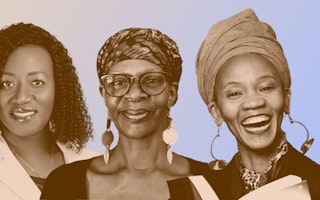The Tangled Web of Discrimination Faced by Muslim Women
By Julie Pascoet
“We don’t want women with headscarves.” This short statement in February by former French president Nicolas Sarkozy illustrates the level of rejection that Muslim women can face in some European countries, as if a society could simply get rid of them, as if this headscarf could rob them of their humanity.
I personally know women who were rejected from jobs or could not access vocational trainings because they are Muslim—with or without headscarves. On the International Day for the Elimination of Racial Discrimination—March 21—it is high time that we address this open rejection of Muslim women and realize that these women are victims of racism.
According to recent reports by organizations like the Collective Against Islamophobia in France and Tell Mama in the UK, Islamophobia appears to be an extremely gender-biased form of discrimination: between 58 percent (UK) and 78 percent (France) of reported cases of discrimination concern women. This is likely due in part to the fact that many Muslim women are easily identified as Muslim. In a study carried out by the EU Fundamental Rights Agency in 2009, 84 percent of the respondents who reported wearing traditional or religious clothing in public were women.
Islamophobia is a form of racism resulting from the social construction of a group as a race, attributing to Muslims, and those perceived as such, unchangeable specificities and stereotypes. These critical levels of discrimination targeting Muslim women across Europe, coupled with the increase of parties promoting Islamophobic ideas, policies, and practices during the last European elections, demand concrete action.
The European Network Against Racism’s new project Forgotten Women: The Impact of Islamophobia on Muslim Women [PDF] aims to document this problem in Italy, France, Denmark, Germany, and the UK. Focusing on racist violence, speech, and employment practices, the project will make concrete recommendations to European and national decision makers to ensure Muslim women are better protected by law and specific measures are adopted at the national level to that effect. We will work in conjunction with feminist and Muslim women organizations to support them in their struggle for full equality and counter stereotypes which have significant impact on levels of discrimination.
While Muslim women’s experiences of discrimination are mainly understood as based on religion, this tends to conceal the fact that they are also discriminated against just because they are women.
Certain religious practices are often treated as intrinsically contrary to gender equality. In some cases, in fact, “the rhetoric and language of feminism has been co-opted by Islamophobes.” Throughout Europe, we see political representatives and some feminist leaders focusing their interest and energy against Muslim religious practices, when little is done to fight the deep inequalities that still persist for all European women.
Muslim women are women as much as they are Muslim. Preliminary findings from our research in the five countries show that Muslim women suffer from the same inequalities all women experience—the gender pay gap, difficulty accessing employment, the glass ceiling, violence—but these are compounded by additional factors such as a migrant background or wearing a headscarf. For example, in a country like Italy where the female employment rate is 46.5 percent—20 points below male employment—discrimination of Muslim women in the labor market further hinders their chances of getting a job.
In the five countries covered by the project, it is virtually impossible to identify and separate the gender, ethnic, and religious motives for discrimination as they overlap in the case of Muslim women and more broadly due to the lack of data on ethnicity and religion (except for the UK). Nevertheless, the headscarf stands out as the main argument to openly discriminate against these women in areas such as education, employment, and healthcare.
Public debates and surveys show that a majority of the population in these countries has a very negative view of the headscarf, generally considered a symbol of oppression. When it comes to physical assaults targeting Muslims, almost all victims are women. With this project, the European Network Against Racism and its partners hope to raise awareness about this overlooked phenomenon, debunk myths, and as a result improve the protection of Muslim women.
At a time when women have managed to become economically independent and gain positions of power in Europe, it’s extraordinary that we would still discriminate against some of them based on how they dress. The perceptions around Muslim women expose the overall level of emancipation of women in Europe.
Action is needed, not only by EU member states but also by women’s rights organizations. Women should be empowered regardless of the way they dress. Whether or not we understand the choice of these women to dress differently, we need to highlight and nurture the commonalities of our struggle for equality. Diversity is key to achieve economic and social prosperity—Muslim women can contribute a lot in this direction and should not be prevented from doing so. Our society cannot afford to exclude women when its core values include gender equality and the fight against racism.
The European Network Against Racism is a grantee of the Open Society Foundations.
Learn more about the project to study the impact of Islamophobia on women.
Julie Pascoet is a policy officer with the European Network Against Racism.


